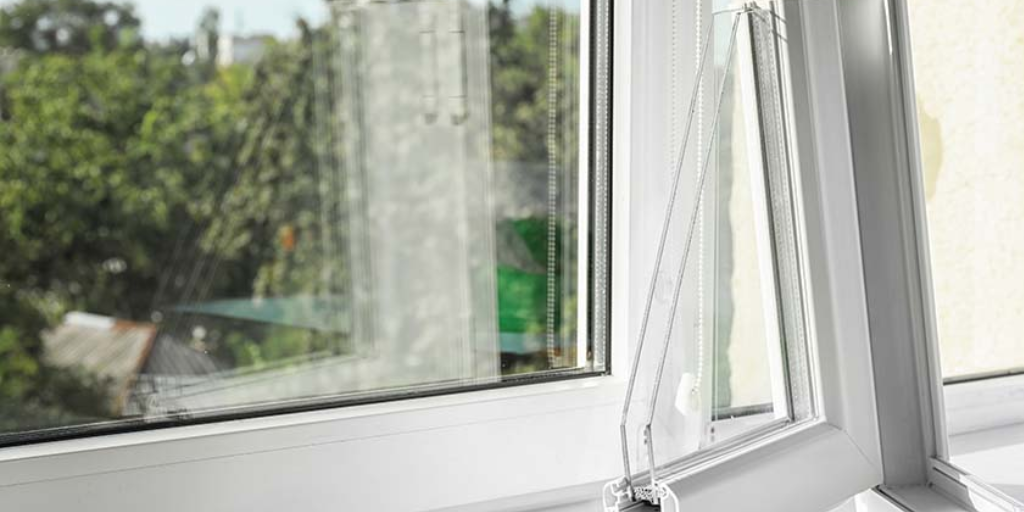
It is estimated that 30% of a home's heating energy is lost through inefficient windows. When purchasing replacement windows for your home, selecting windows that are highly energy-efficient will save you money on utility bills and increase the resale value of your home.
How Energy Efficient Windows Work
Glass alone is a terrible insulator. Like using a teacup instead of a thermos, older windows quickly allow the temperature from the outside in. This allows air to escape through small cracks, missing or improperly installed sealing, or through the glass itself. When the air escapes, your home's heating or cooling system has to work harder to maintain your desired temperature.
1. Low-E Glass Coating
A Low-emissivity glass (or Low-E glass) can block 90% of the sun's rays and keep the heat inside in the winter and outside in the summer. There are glazing options to choose from as well, including tints, gas fills, and reflective coatings.
2. Vinyl Frames Filled with Eco-Friendly Insulating Foam
Compared to wood or metal frames, vinyl window frames are significantly more efficient because they are built with UV light stabilizers. These stabilizers keep the sunlight from breaking down the vinyl, meaning they don’t corrode or rot like wood or metal frames do.
Vinyl frames are highly durable, and they’re essentially maintenance-free. The hollow cavities of vinyl frames allow space for insulation to be added. In a well designed energy-efficient window, 100% polymer structural foam is used as an insulator in both the frame and sashes. This helps minimize air leakage and condensation.
3. Double or Triple-Paned Glass with Argon/Krypton Gas
One of the newest innovations for energy-efficient windows uses multiple panes of glass with Argon or Krypton gas to fill the space between the panes. With a triple-paned glass window, up to 97% of the sun's UV rays are blocked. Filling the spaces between the insulated glass with gas will even further reduce heat transfer. Not only does this make your window energy efficient, but it also prevents fading of fabrics, floor coverings, and other belongings.

4. Window Attachments
Specially-made screen windows and window shades can also increase energy efficiency. Energy-efficient window screens look similar to regular insect screens, but also reduce heat absorbed from the sun and UV damage. As for shades, experts agree cellular shades are the best energy efficient window shades available. They use a series of cell pockets to trap air leakage around your windows, and are often referred to as honeycomb shades due to their unique design shape.
Benefits of Energy-Efficient Windows
1. Environment
When you replace single-pane windows you can save 2.4 - 9.8 tons of CO2 a year from your carbon footprint. Energy-efficient windows can conserve energy, improving sustainability and reducing your home’s potential negative impact on the environment.
2. Energy Costs
The EPA (Environmental Protection Agency) estimates that replacing your old single pane models with energy-efficient windows can save $126 to $465 yearly on your home’s utility bill. So with energy-efficient windows, you can keep your home cozier in the winter and cooler in the summer without the added cost.
3. Comfort
In terms of what you’ll experience first-hand with energy-efficient windows, you’ll see reduced noise pollution, reduced condensation, and drafts eliminated. Taking control of the indoor temperature with energy-efficient windows simply leads to a better quality of life indoors for you and your family.
Types of Energy-Efficient Windows
There are several different types of energy-efficient windows, and each type of energy-efficient window operates a different way. There are benefits and drawbacks to each style in terms of functionality and design, as well as their energy-efficiency.
1. Double-Hung Windows
These windows are the most common in homes. This window involves two glass panes, one sliding up from the bottom and the other down from the top. While these windows are popular for being easy to clean, they are also susceptible to air infiltration due to the movement of the panes.
2. Casement Windows
A casement window involves the glass pane swinging open and closed on hinges, often with use of a crank. With this window type, it is possible to seal the panes tightly, although it can also require additional maintenance for the crank.
3. Fixed Pane Windows
Also known as picture windows, fixed pane windows do not open at all. While this quality makes them some of the most energy efficient and easy to maintain window types, the fact that they cannot be opened is a serious drawback for most homeowners.
4. Awning and Hopper Windows
These types of windows operate much like casement windows, except they are hinged at the top or bottom and designed to swing outward. Just like casement windows, both of these types of windows have low air leakage rates because they close by pressing the sash against the frame, but also require more maintenance due to their hand crank operation.
With all the methods available to make your windows more energy efficient, the choice to upgrade is an obvious one. You can be certain that you will both save money and own a more modern, environmentally-conscious home (with a higher resale value) as a result. Builders & Remodelers provides homeowners in the Twin Cities with the Soft-Lite Elements line, the most energy-efficient windows on the market. Call us today to learn more, or request a free estimate.








